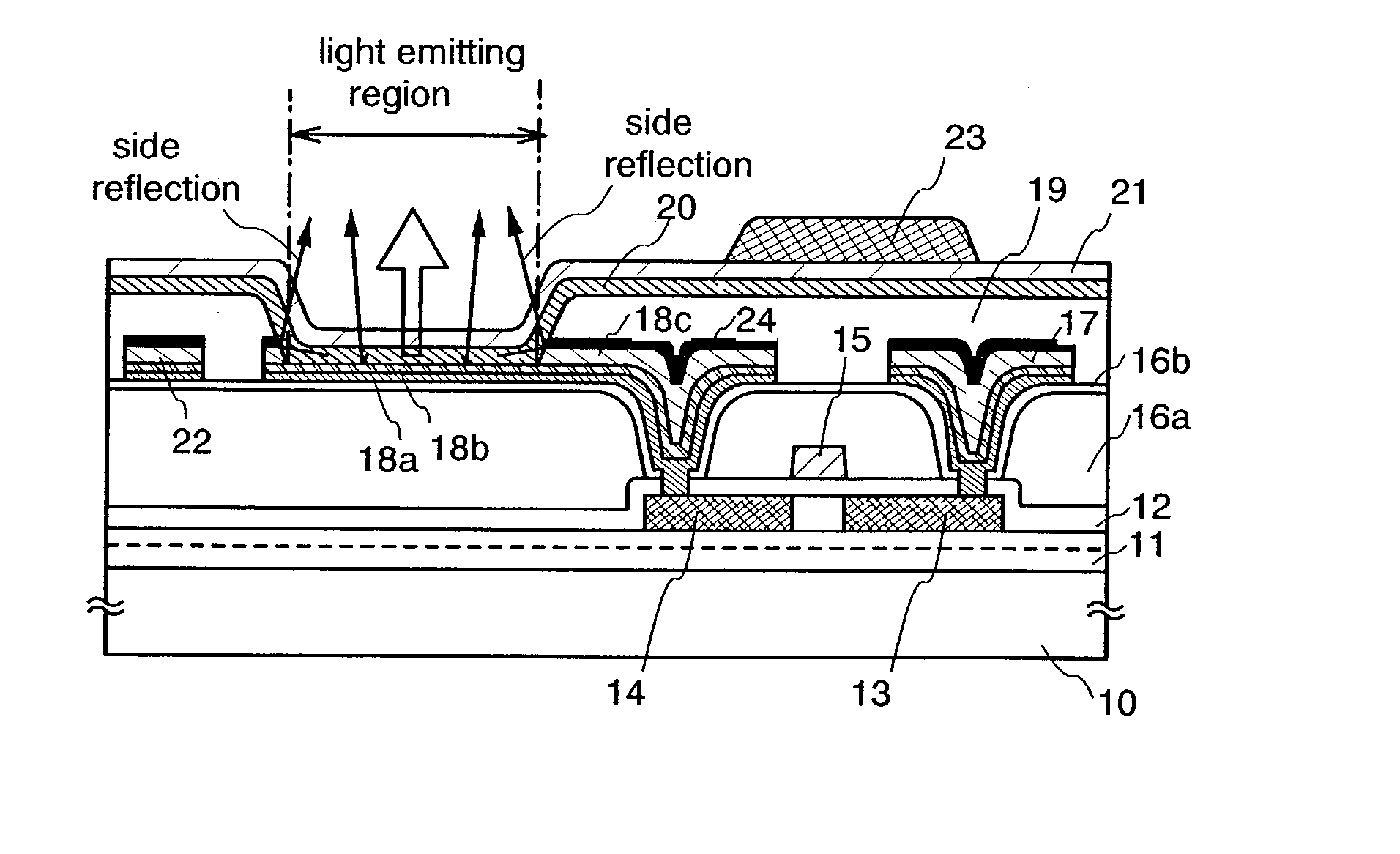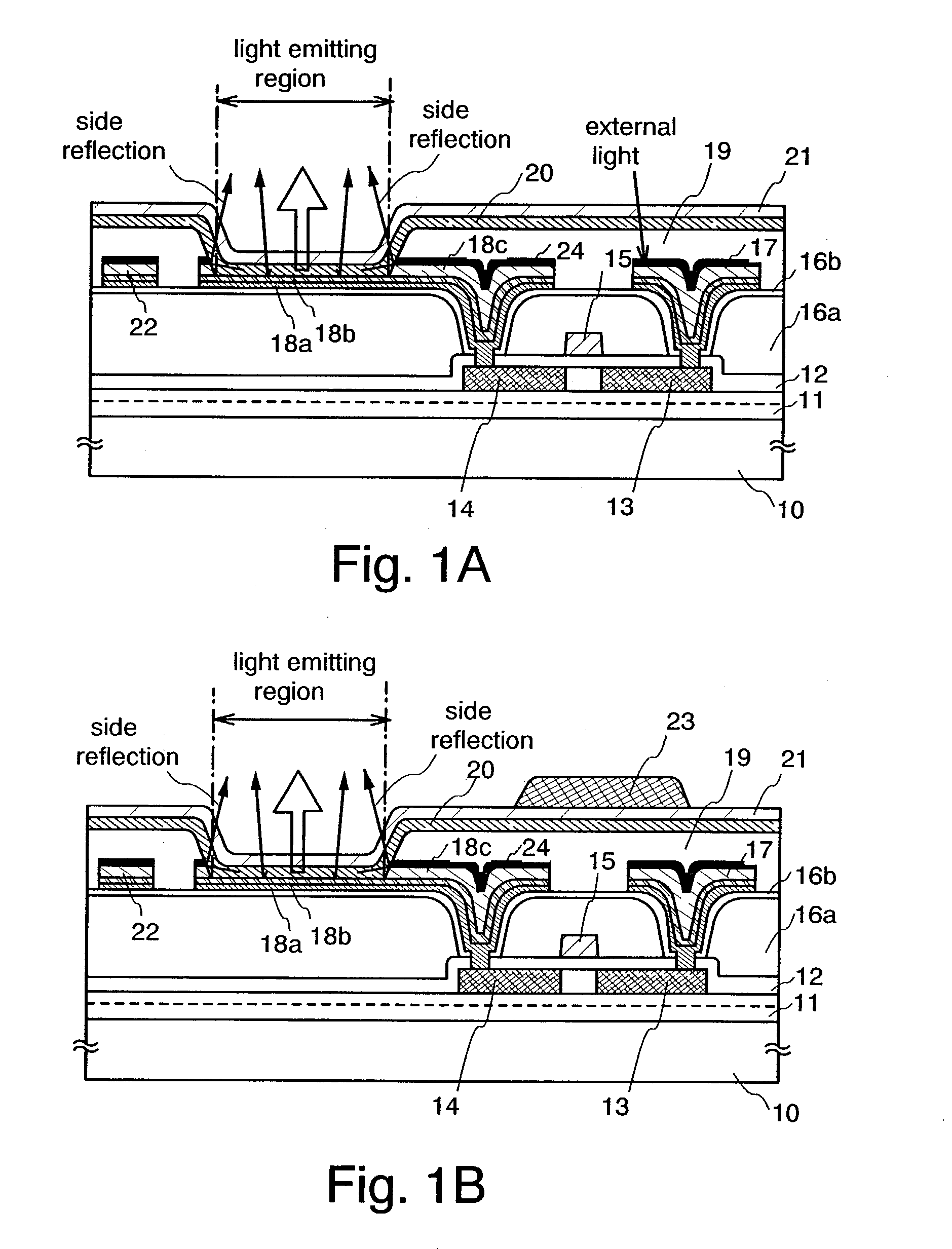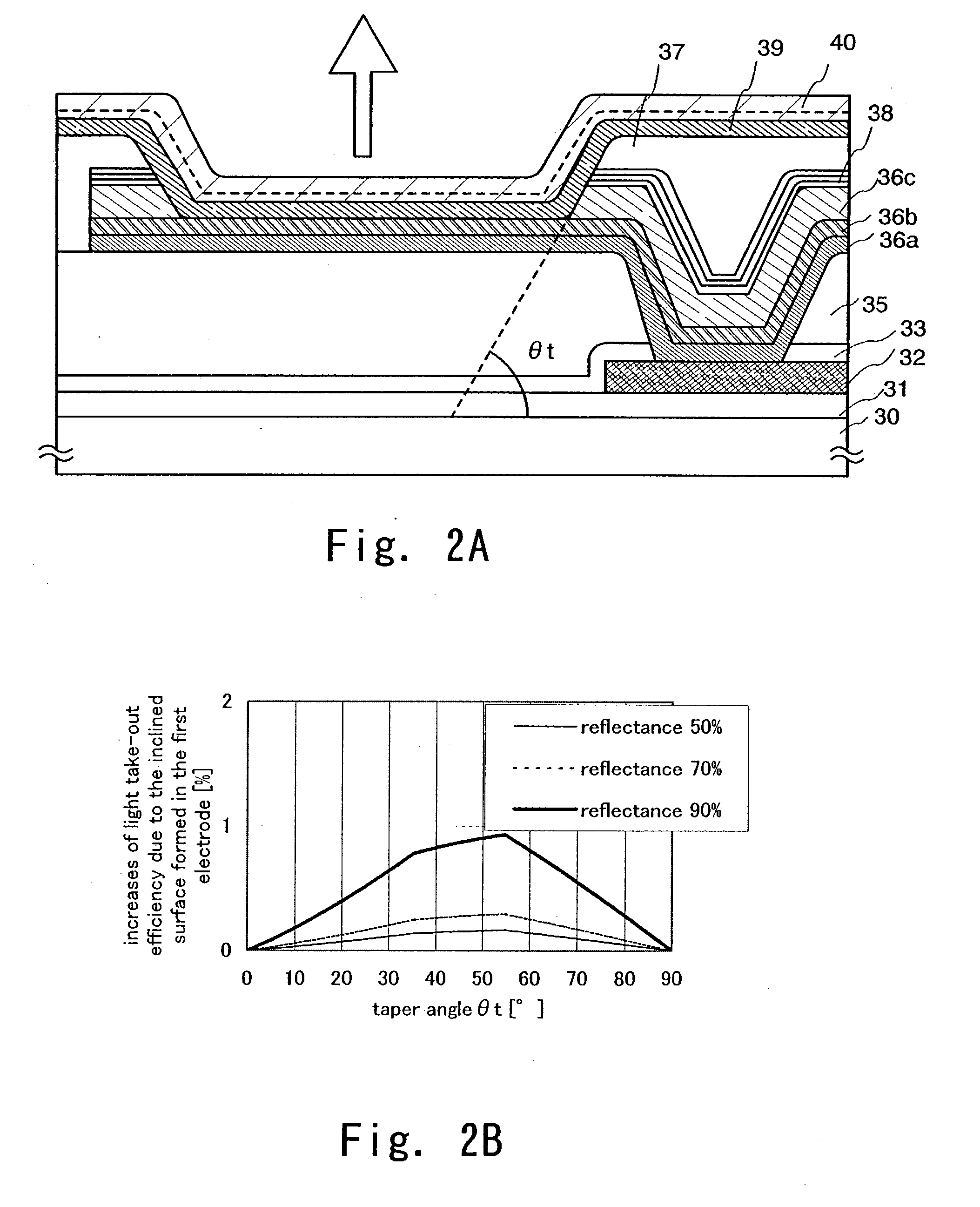Light emitting device and manufacturing method thereof
a technology of light emitting devices and manufacturing methods, applied in the direction of organic light emitting devices, semiconductor devices, electrical devices, etc., can solve the problems of high film resistance of transparent electrodes and restricted opening ratios
- Summary
- Abstract
- Description
- Claims
- Application Information
AI Technical Summary
Benefits of technology
Problems solved by technology
Method used
Image
Examples
embodiment 1
[0140] Embodiment 1
[0141] In this embodiment, a brief description is given with reference to FIGS. 2A to 3C on an example of procedure of forming a light emitting element in accordance with the present invention.
[0142] First, a base insulating film 31 is formed on a substrate 30 which has an insulating surface.
[0143] The base insulating film 31 is a laminate and the first layer is a silicon oxynitride film formed to have a thickness of 10 to 200 nm (preferably 50 to 100 nm) by plasma CVD using as reaction gas SiH.sub.4, NH.sub.3, and N.sub.2O. Here, a silicon oxynitride film (composition ratio: Si=32%, O=27%, N=24%, H=17%) with a thickness of 50 nm is formed. The second layer of the base insulating film is a silicon oxynitride film formed to have a thickness of 50 to 200 nm (preferably 100 to 150 nm) by plasma CVD using as reaction gas SiH.sub.4 and N.sub.2O. Here, a silicon oxynitride film (composition ratio: Si=32%, O=59%, N=7%, H=2%) with a thickness of 100 nm is formed. Although...
embodiment 2
[0165] Embodiment 2
[0166] This embodiment describes with reference to FIGS. 6A to 8 an example of a light emitting device in which an auxiliary electrode is formed.
[0167] FIG. 6A is a top view of a pixel and a sectional view taken along the dot-dash line A-A' is FIG. 6B.
[0168] In this embodiment, steps up through formation of an insulator 67 are identical with those in Embodiment 1 and descriptions thereof are omitted here. The insulator 37 in FIG. 2B corresponds to the insulator 67 in FIG. 6B.
[0169] Following the descriptions in Embodiment 1, a base insulating film, a drain region 62, a gate insulating film 63, an interlayer insulating film 65, layers 66a-c of a first electrode, a light absorbing multi-layered film 61, and the insulator 67 are formed on a substrate having an insulating surface.
[0170] Next, a layer containing an organic compound 68 is selectively formed. This embodiment employs evaporation using an evaporation mask or ink jet to selectively form the layer containing...
embodiment 3
[0178] Embodiment 3
[0179] Further, an exterior view of an active matrix type light emitting apparatus is described with reference to FIG. 9. Further, FIG. 9A is a top view showing the light emitting apparatus and FIG. 9B is a cross-sectional view of FIG. 9A taken along a line A-A'. Reference numeral 901 indicated by a dotted line designates a source signal line driver circuit, numeral 902 designates a pixel portion, and numeral 903 designates a gate signal line driver circuit. Further, numeral 904 designates a seal substrate, numeral 905 designates a first seal agent and an inner side surrounded by the first seal agent 905 constitutes a second agent 907.
[0180] Further, reference numeral 908a, b designates a wiring for transmitting signals inputted to the source signal line driver circuit 901 and the gate signal line driver circuit 903 for receiving a video signal or a clock signal from FPC (flexible printed circuit) 909 for constituting an external input terminal. Further, although ...
PUM
 Login to View More
Login to View More Abstract
Description
Claims
Application Information
 Login to View More
Login to View More - R&D
- Intellectual Property
- Life Sciences
- Materials
- Tech Scout
- Unparalleled Data Quality
- Higher Quality Content
- 60% Fewer Hallucinations
Browse by: Latest US Patents, China's latest patents, Technical Efficacy Thesaurus, Application Domain, Technology Topic, Popular Technical Reports.
© 2025 PatSnap. All rights reserved.Legal|Privacy policy|Modern Slavery Act Transparency Statement|Sitemap|About US| Contact US: help@patsnap.com



